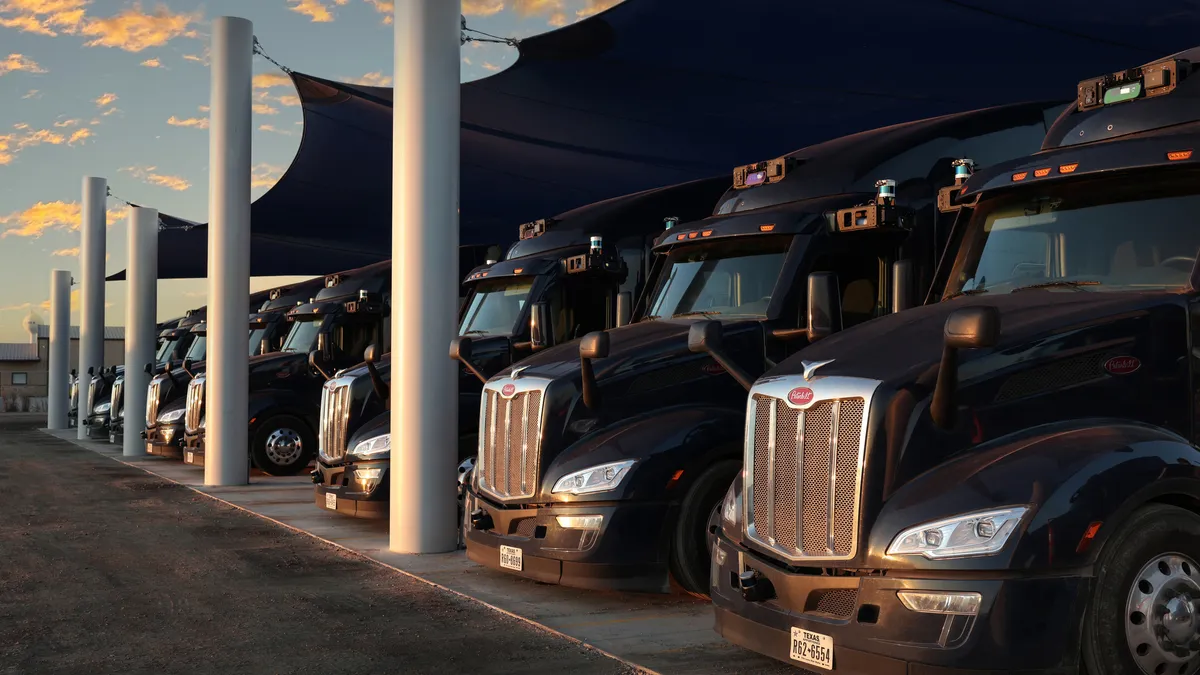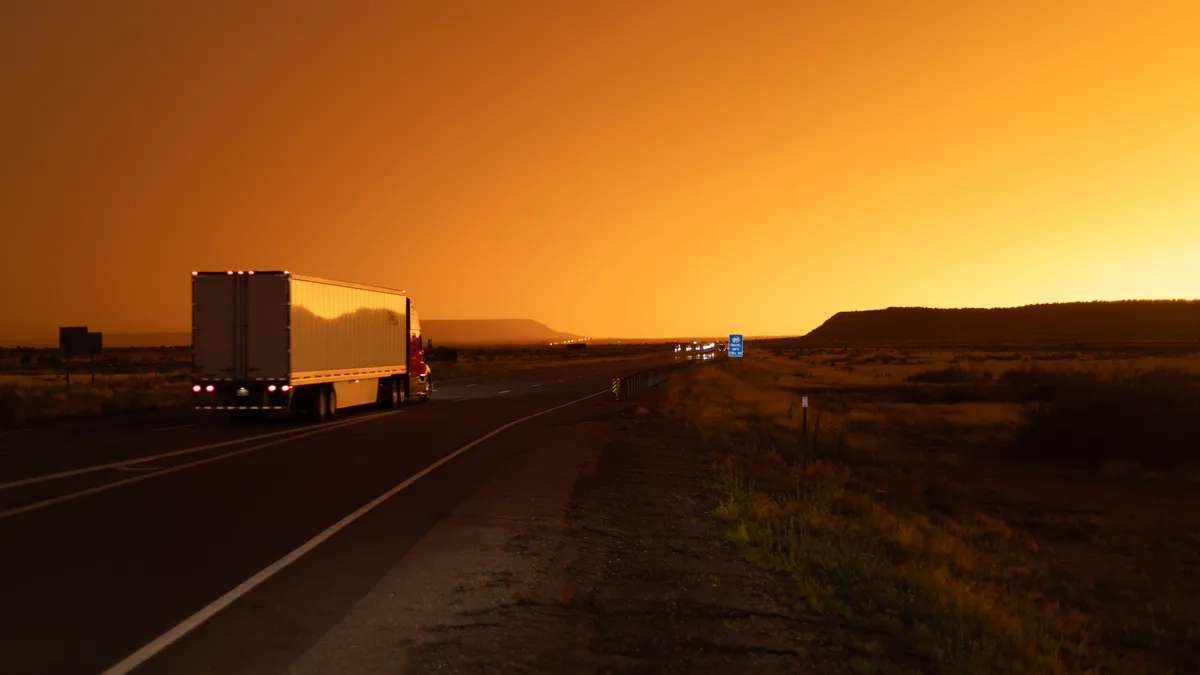Dive Brief:
- Aurora Innovation has met the technological capabilities it needs to haul freight without a driver between Dallas and Houston by the end of 2024, the company announced April 3 in a news release.
- With its Aurora Driver Beta 6.0 update, the company said it met new capabilities, which include “responding to collisions with other vehicles or property,” such as a sideswipe, and detecting extreme and unexpected weather events.
- The company is now refining and validating its technology in a final phase and also expects to close its safety case for driverless operations in its Dallas-Houston launch lane by the end of 2023.
Dive Insight:
The feat moves forward a push that began six years ago, completing the development of Aurora’s self-driving system architecture, Co-Founder and Chief Product Officer Sterling Anderson said in a blog post.
“Over the last 18 months, Aurora has released dozens of capabilities through six Aurora Driver Beta updates, incrementally increasing the Aurora Driver’s autonomous performance, safety, and reliability in pilot hauls for companies like FedEx, Werner, Schneider, and Uber Freight,” the company said.
The Beta 6.0 update allows for detecting and responding to collisions with other road users or objects; sudden heavy rain, snow or fog; and high winds that could affect a truck’s control, Anderson wrote.
The technology “can now handle not only common driving tasks (like negotiating with other traffic) and less common situations (like construction), but it can also detect and respond to rare events like scattered road debris, emergency vehicles, collisions & extreme weather,” Anderson also said on Twitter.
That means when visibility conditions worsen, Aurora’s technology will act similar to how human drivers do, slowing down. If the situation compromises safety, it will search for a safe place to stop, Anderson noted.
While Aurora sets its sights on safety and commercial launch timelines, other AV companies are noting their evaluations of their emerging technology, too. Torc Robotics announced in January that it formed a multiyear agreement with testing firm Foretellix, where the latter’s technology will evaluate millions of driving scenarios for highly automated self-driving trucks.
Meanwhile, Kodiak Robotics announced last week that it removed a roof-mounted “center pod” sensor suite, relocating the sensors to just the side-mounted mirrors to better facilitate installations.
And TuSimple Holdings also said last week that its autonomous truck central computational unit, the TuSimple Domain Controller, is testing sample units with certain customers and plans to produce units in Q4.
“The proprietary TDC is part of the larger industry trend of moving from edge computing at the sensor level to a centralized platform that has the computational power to process more data, fuse multiple sensor modalities, and allow for complex driving operations,” TuSimple said.













